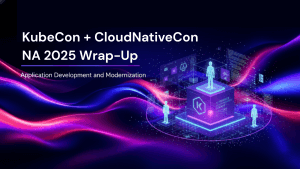At its core, the idea behind the Industrial Internet (II) is to bring all the world’s industrial equipment online to improve the efficiency and effectiveness of industrial processes through large-scale data analytics and automation.
For example, wind turbines outfitted with data-generating sensors and analytics software can intelligently self-adjust operations based on wind speed and energy demand. Jet engines can alert maintenance workers when compressors and fans need replacing. Water treatment equipment can adapt to changing chemical conditions in real-time.
The potential benefits are enormous. Across sectors including energy, utilities, transportation, healthcare, and manufacturing, Wikibon research estimates the II has the potential to create $1.3 billion in value by 2020. This includes savings due to more efficient use of energy resources and netting new value generated by the development of new data-driven services that improve quality of life for citizens.

Summary of Value Delivered by the Industrial Internet 2012-2020 ($B)
Source: Wikibon, 2013
As Wikibon CTO and co-founder David Floyer wrote:
The main difference between the consumer/social Internets and the Industrial Internet is in how and how much value is created. For consumer/social Internets, the majority of value is created from advertisements. The value created from the Industrial Internet is much greater from the same amount of data, and has three components:
*The value of increased efficiency of the industrial plant equipment and long-term maintenance and management of the equipment. In our research this was found to be always above 10 percent and as high as 25 percent.
*The value contribution to adjoining Industrial Internet networks, such as balancing short-term positive cash flow against additional long-term equipment costs such as maintenance.
*The value contribution of disruptive new business models is a wild-card that could, in a few cases, be dramatically high, or in most cases moderate or zero.
Barriers must be overcome
But there are numerous barriers to adoption that must be overcome before the II becomes a reality. Among these barriers is the lack of industry-wide standards that govern how II-related data is formatted, collected, shared, analyzed and secured.
Such standards are required because the full value of the II can only be unlocked when machines and data are connected and architected in such a way as to enable the orchestration of industrial processes across geographic locations and between equipment from different manufacturers. Utility companies across a given region need to coordinate operations to effectively increase energy utilization rates, for example. Even in a single utility company, there is almost certainly equipment from multiple manufacturers at different stages in their lifecycles that must communicate.
Security is also critical, even more so than in the II than the consumer Internet. Hackers that access consumer credit card numbers can create significant financial havoc, but consider the possibilities of terrorists gaining control of the II-enabled energy grid or telecommunications networks.
Steps of progress
This is why the establishment of the Industrial Internet Consortium (IIC) is a welcome and needed development. The IIC, whose creation was announced in March 2014, is a joint initiative among some of the biggest player in the II, including founding members General Electric, IBM, AT&T, Cisco and Intel. Its self-described mission is to “identify requirements for open interoperability standards and define common architectures to connect smart devices, machines, people, processes and data.” The IIC is open to “any public or private business, organization or entity interested in driving global market development for the Industrial Internet.”
The IIC’s mission is right on target, but living up to it could be a challenge. There are multiple billions of dollars in new revenue at stake for the IIC’s members, who are all competing with one another. GE alone has generated over $800 million in II-related revenue in just the last two years. The establishment of the IIC indicates its members understand in order to maximize revenue and shareholder value for each requires cooperation among all members to enable the II to reach its full potential. Whether the IIC actually does anything to achieve its lofty goals will be the more telling factor.


